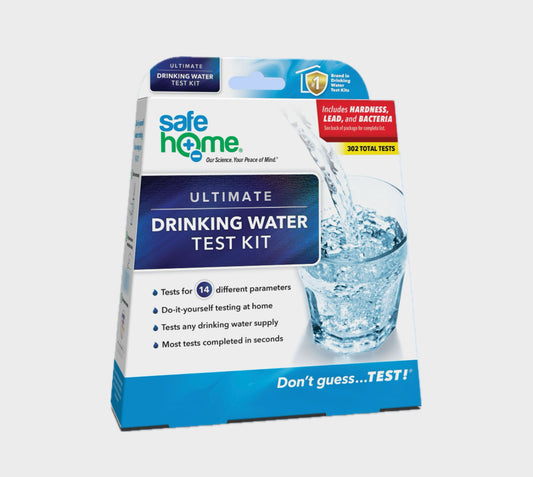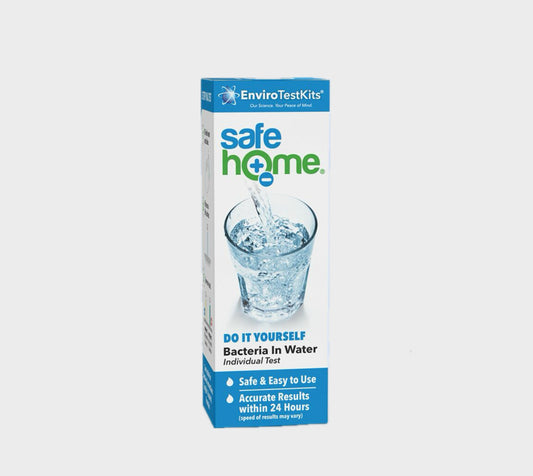Collection: What’s in Your Water?
Water Contaminants Overview
Alkalinity
- Description: Measures the ability of water to neutralize acids, primarily due to the presence of bicarbonates, carbonates, and hydroxides.
- Health Implications: Not a direct health concern but important for maintaining stable pH levels, protecting aquatic life, and ensuring effective disinfection.
- Acceptable Levels: Generally 20-200 mg/L as CaCO₃ for drinking water.
Calcium
- Description: A common mineral in water, contributing to water hardness.
- Health Implications: Not harmful; an essential nutrient for bone health. High levels contribute to scale formation in pipes and home appliances.
- Acceptable Levels: No specific health-based guideline, but typically 40-120 mg/L in drinking water.
Carbonate/Bicarbonate
- Description: Forms of dissolved carbon dioxide; bicarbonate (HCO₃⁻) is the dominant form at typical pH levels.
- Health Implications: Not harmful. Key components of alkalinity, influencing water buffering capacity.
- Acceptable Levels: Not specifically regulated; part of total alkalinity measurements.
Free Chlorine
- Description: Chlorine available to disinfect water, not yet reacted with contaminants.
- Health Implications: Effective for disinfection but can cause irritation and respiratory issues at high levels.
- Acceptable Levels: Typically 0.2-2.0 mg/L for effective disinfection without harmful effects.
Total Chlorine
- Description: The sum of free chlorine and combined chlorine (chlorine that has reacted with contaminants).
- Health Implications: Ensures ongoing disinfection; similar health effects as free chlorine.
- Acceptable Levels: Generally 0.2-4.0 mg/L for safe drinking water.
Copper
- Description: Can enter water through corrosion of copper pipes and fittings.
- Health Implications: Essential nutrient in small amounts; high levels can cause gastrointestinal distress and liver/kidney damage.
- Acceptable Levels: EPA guideline is 1.3 mg/L.
Fluoride
- Description: Added to water for dental health; naturally occurring in some sources.
- Health Implications: Prevents tooth decay at optimal levels; excessive intake can lead to fluorosis.
- Acceptable Levels: 0.7-1.2 mg/L for dental health benefits.
-
Recent studies have raised concerns about the potential health impacts of fluoride, particularly regarding its effects on cognitive development in children.
A notable study from Tulane University in 2023 found that excessive fluoride exposure is linked to cognitive impairments in children, highlighting a need for further examination of fluoride levels in drinking water . Similarly, a meta-analysis conducted by Harvard researchers reviewed multiple studies and concluded that higher fluoride exposure is associated with lower IQ levels in children. This research found that children in high-fluoride areas had significantly lower IQ scores compared to those in low-fluoride areas .
https://www.hsph.harvard.edu/news/features/fluoride-childrens-health-grandjean-choi/
These findings suggest that while fluoride has benefits for dental health, its potential neurotoxic effects, particularly in children, necessitate careful consideration of exposure levels. For adults, the evidence linking fluoride to adverse cognitive effects is limited and less conclusive.
Overall, these studies underscore the importance of balancing fluoride use to maintain dental health while minimising potential risks to neurological development.
Hardness
- Description: Caused by dissolved calcium and magnesium; measured in mg/L as CaCO₃.
- Health Implications: Not harmful; affects soap usage and can cause scale buildup in plumbing and appliances.
- Acceptable Levels: Soft water is 0-60 mg/L, moderately hard is 61-120 mg/L, hard is 121-180 mg/L, very hard is over 180 mg/L.
Iron
- Description: Common in groundwater; causes staining and taste issues.
- Health Implications: Not a major health risk; essential nutrient in small amounts. High levels can cause gastrointestinal issues.
- Acceptable Levels: 0.3 mg/L is the secondary standard for aesthetic reasons.
Nitrate
- Description: Often from agricultural runoff, sewage, and fertilizers.
- Health Implications: Can cause methemoglobinemia (blue baby syndrome) in infants; potential health risk in high levels.
- Acceptable Levels: EPA standard is 10 mg/L as NO₃⁻-N.
Nitrite
- Description: Intermediate in the nitrogen cycle; can be formed from nitrate.
- Health Implications: Similar to nitrate, can cause methemoglobinemia.
- Acceptable Levels: EPA standard is 1 mg/L as NO₂⁻-N.
pH
- Description: Measure of acidity or alkalinity of water; scale from 0 (acidic) to 14 (alkaline), with 7 being neutral.
- Health Implications: Affects water chemistry and treatment processes; extreme pH levels can cause corrosion or scaling in pipes.
- Acceptable Levels: Typically 6.5-8.5 for drinking water.
Specific Bacteria in Water
1. Escherichia coli (E. coli)
- Description: Indicator organism for fecal contamination.
- Health Implications: Most strains are harmless, but some, like E. coli O157:H7, can cause severe foodborne illness.
2. Legionella
- Description: Causes Legionnaires’ disease, a severe form of pneumonia.
- Health Implications: Thrives in warm water environments like hot tubs, cooling towers, and plumbing systems.
3. Vibrio cholerae
- Description: Causes cholera, characterized by severe diarrhea and dehydration.
- Health Implications: Found in contaminated water sources, especially in areas with poor sanitation.
4. Salmonella
- Description: Causes salmonellosis, leading to diarrhea, fever, and abdominal cramps.
- Health Implications: Can be found in water contaminated with feces.
5. Pseudomonas aeruginosa
- Description: Common in water and soil; can cause infections, especially in people with weakened immune systems.
- Health Implications: Known for its resistance to antibiotics.
Sources of Contamination
- Human and Animal Waste: Fecal contamination is a primary source, introducing pathogens like E. coli, Salmonella, and Shigella.
- Industrial Discharges: Factories may release harmful bacteria and other pollutants into water bodies.
- Agricultural Runoff: Manure and fertilizers can carry bacteria into streams and rivers.
-
Natural Sources: Bacteria can naturally occur in water, especially in warm and nutrient-rich environments.
Health Implications
- Infections: Bacterial infections from contaminated water can range from mild gastrointestinal issues to severe illnesses like cholera and Legionnaires’ disease.
- Antibiotic Resistance: Some waterborne bacteria, like Pseudomonas aeruginosa, are resistant to multiple antibiotics, complicating treatment.
- Outbreaks: Contaminated water can lead to widespread outbreaks, especially in areas with poor water treatment infrastructure.
Prevention and Control
- Water Treatment: Effective filtration, chlorination, and other purification methods to remove or kill bacteria.
- Sanitation: Proper waste disposal and sanitation practices to prevent contamination.
- Monitoring and Regulation: Regular testing of water sources and adherence to water quality standards.
This compilation provides an extensive overview of various contaminants, their implications, and measures for their management in water. If you have any further questions or need additional details, feel free to ask!
-
Ultimate Drinking Water Test Kit
Regular price $69.99 NZDRegular priceUnit price / per -
Basic Drinking Water Test Kit
Regular price $35.95 NZDRegular priceUnit price / per -
Bacteria in Water Test Kit
Regular price $35.99 NZDRegular priceUnit price / per -
Home Drinking Water Test Kit
Regular price $54.99 NZDRegular priceUnit price / per




